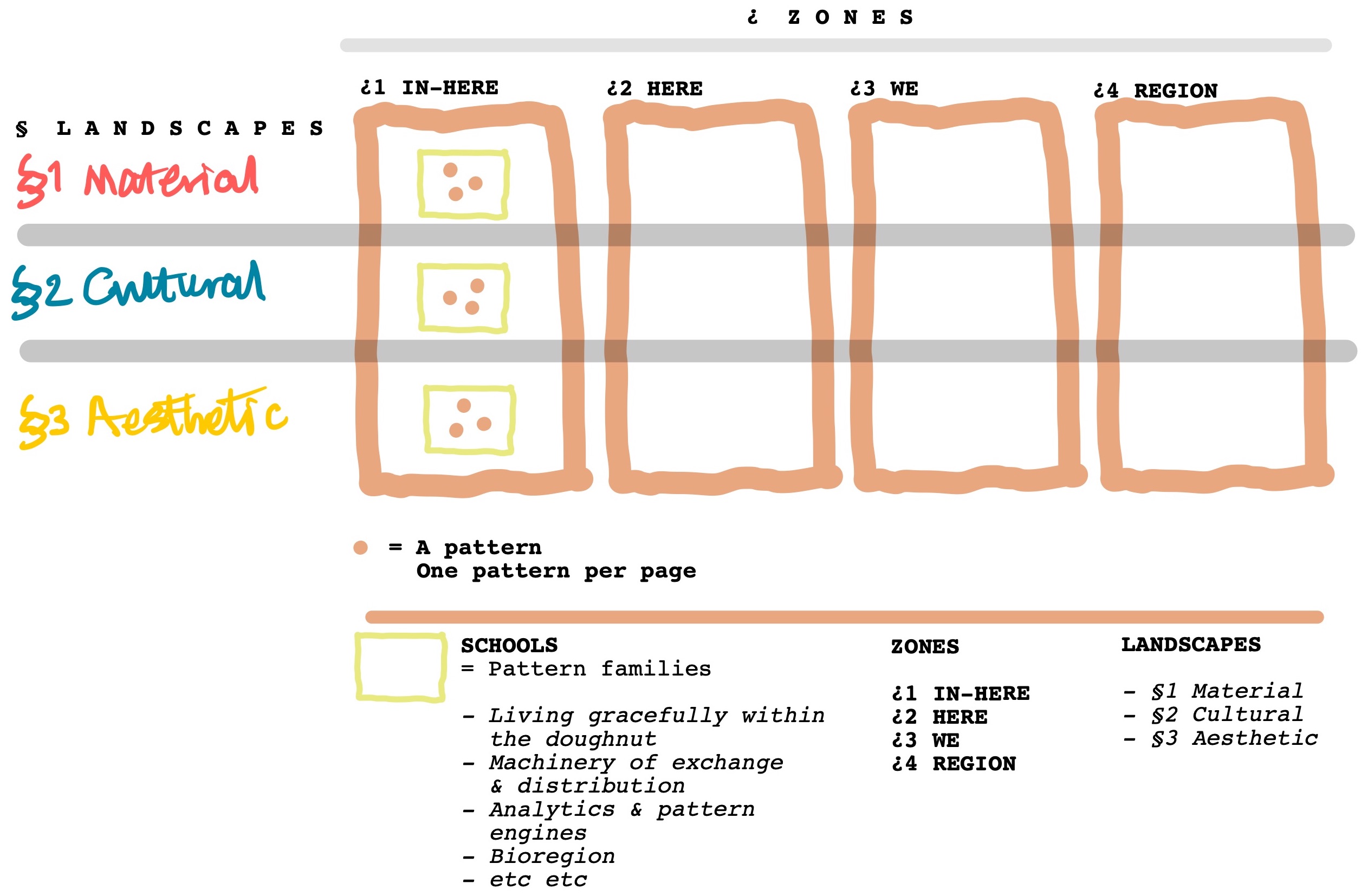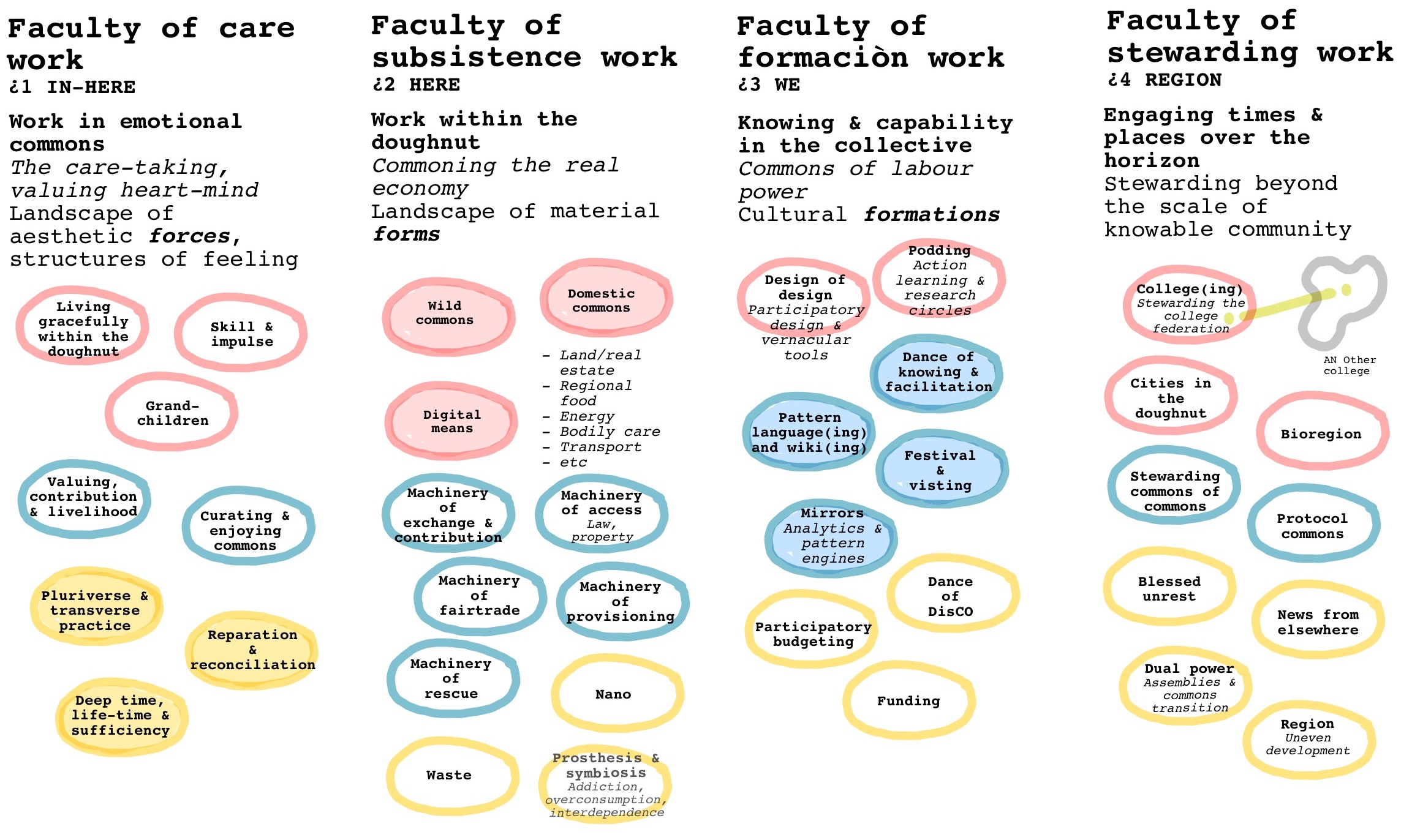Three systems of categories have prominence in the foprop pattern language.

Three systems of categories in the foprop pattern language
The first is the scope-hierarchy (not scale hierarchy) of ¿zones: - ¿§ In-here - ¿2 Here - ¿3 We - ¿4 Region Not a nested system of material extents or logical domains, but a peer-system of directions or 'compass points' to face in.
The second is the set of §landscapes. Three landscapes of-and-in practice

Three landscapes implicit in practice per se
These, similarly, are not a hierarchy, but a set of three kinds of material relationship, simultaneously presenting in practice per se. They are distinguished because practicality is the aim of the language, and the skills and perceptions needed to recognise and work within each landscape offer quite distinct challenges.
The landscapes are taken as the weft, and the zones as the warp, in a 'weave' of pattern-space. Within each intersection of warp/weft, there can be any number of families of related patterns. In the context of organising a 'college' of patterning, the zones are faculties, and the pattern families are schools. Schools constitute the third system of categories in foprop. There are something like 40 of them.

Schools within faculties - Colour coding indicates landscapes
To work fluently in a wiki that holds these patterns, three systems of categorisation might need to be consulted, for different 'readings' of the nature and the relationship of a pattern. Maybe, we're back with the handbook problem again? Nested categories in a handbook
Also - with any of these three readings or collections of a set of patterns, we would probably want to view the network that they form. Thus we're back again to the (Graphviz) visualisation of Category elements within a pattern